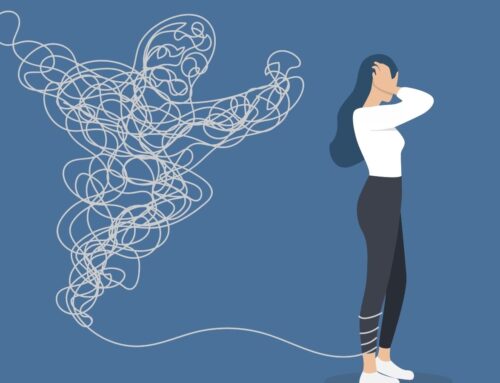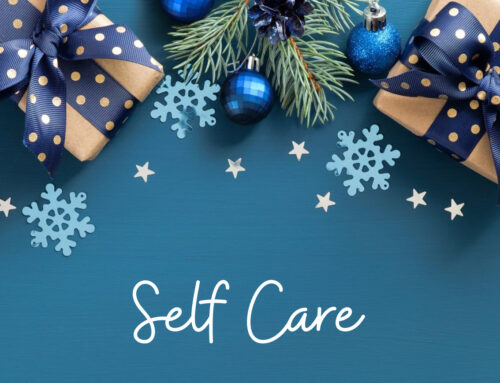Last spring, one large and pervasive loss settled over us all like a disorienting fog: the loss of normalcy, routine, safety, and predictability. This loss was quickly followed by others, including the loss of jobs and financial security; of gatherings and social lives; of important moments like weddings, graduations, and birthday parties; and, most heavily, of loved ones. While the grief we experience after losing a loved one may be the toughest, the grief provoked by any loss (big or small) can feel debilitating. But grief has a purpose — it is how our bodies adapt to a loss and process it enough to move forward. But what happens when grieving is interrupted, delayed, or compounded by a new loss? COVID-19 has created an environment where many people are processing multiple losses all at once — what does this mean for the way we grieve?
When you are dealt multiple losses, grieving each one becomes much harder.
In an ideal world, you get the chance to heal from one loss before you are tasked with facing another. The word “heal” here doesn’t mean that the grief disappears entirely. Instead, grief moves from an acute stage, when it is fresh and the hurt is sharp and distracting, to an integrated stage, when the grief quiets and softens. In the integrated stage, the grief is not gone, but the bereaved can return to normal life.
According to grief researcher Katherine Shear, to get to the integrated stage, a grieving person needs to be able to accept the loss, adapt to a new world with a loved one’s absence, and believe in a positive future.
Cumulative grief is what happens when you do not have time to process one loss before incurring another. The losses come in too rapid a succession for you, the bereaved, to heal from the initial loss. The difficult emotions which come from the initial loss bleed into the experience of the second loss. If there is a third loss, then the emotions from both the first and second losses get tangled up with the emotions of the third. So on and so forth. As you accumulate losses, processing the grief from each one becomes harder to handle.
The experience of cumulative grief is especially hard because no two losses feel the same, resulting in a confusing mix of painful and sometimes contradictory emotions. While one loss may make you feel angry, another may make you feel numb, another may knock you down with sadness, and yet another might make you feel relief (think: the passing of a parent who was, in life, suffering).
Typically, cumulative grief is the exception to the rule, not the norm. But the pandemic has flipped that script. These days, the majority of the world’s population is experiencing cumulative grief.
Lately, we’ve been unable to share in the ways we normally move forward with grief.
No two losses share the same grieving rituals — grieving the sudden loss of a parent is different from the loss of a friend is different from the loss of your senior year of high school is different from the loss of your health.
However, there are a handful of ways to address and interact with grief that promote healing. These include enacting end of life rituals (or other closure rituals for non-death losses), engaging in fulfilling activities, leaning on the support of others, and returning to “normal” routines. During the pandemic, doing these things has been especially hard.
Take, for example, this short excerpt taken from a journal for physicians. The excerpt is teaching physicians recommendations that they should pass on to the bereaved after losing a loved one.
“…Recommendations include urging survivors to take good physical care of themselves (eg, pay attention to diet and rest, maintain friendships). Attention to a daily routine, regular exercise, and participation in activities that divert attention away from loss…”
As you can see, the very actions which we are supposed to use to heal our grief are the same ones which the pandemic has majorly disrupted. How can we return to our normal activities when normal is a foreign concept these days?
Why do we need to work through grief? How come it can’t go away without facing it?
When you are attached to someone or something, it becomes integrated into the way you see your personal world, almost as if it is a literal structure on the map of ‘you.’ When you experience a loss, it is a blank space on the map. The thing is — when we grow attached to someone or something, it doesn’t feel like it is possible for us to go on without it. Grief is the painful experience of seeing the impossible happen (the blank space) and building a new reality that accepts the loss you’ve experienced.
Sometimes, we try to avoid our grief, maybe because it is too hard to face, we’ve accumulated too many losses to tend to each one, or the pandemic has forced us to delay important grieving rituals. Delaying grief can be a slippery slope, however. Often, when the time comes to deal with the grief, it will have changed, like soft clay that has started to harden, leaving the bereaved in a confusing state of numbness and fresh grief at once.
Grief can be treated.
When your losses are so many and so disparate, juggling the multitude of ways in which you must grieve demands a depleting amount of emotional energy. Add to this that many people are also shepherding others, like children, through grief of their own. Toss on top that you are navigating grief during a pandemic, taking most of our grief rituals (from having our friends over for support after a break up to memorial services) off the table.
All of this is to say that as you grieve, you are going through something that is extremely difficult even in the best of times and much more so nowadays. But support is available.
“Grief can be treated,” says Georgetown Psychology’s Samantha Congdon, LMFT. “How do I know? I’ve seen it done with patience and a willingness to sit in the pain and explore your feelings from all angles. Grief is truly a journey. My encouragement to those on this path is to be an explorer. Be open to new perspectives. You always get to decide what perspective you want to keep, but you never know what a new perspective may unlock. You will have many doors to unlock, but each door opened leads to healing.”
Different therapeutic approaches can be used to help you accept and adapt to life after a loss. Most approaches focus on “stuck points.” A stuck point is anything that plays in your mind and body like a broken record — it can be a thought, image, memory, or sensation that you continuously return to the stuck point keeps you, well, stuck in your grief. A therapist will gently help you break free of your stuck points as well as teach you many other techniques for accepting, adapting, and staying mindful.
“If you are open to getting to know yourself,” says Congdon, “even the parts that hurt, then I have no doubts that with time you will find some internal peace.






